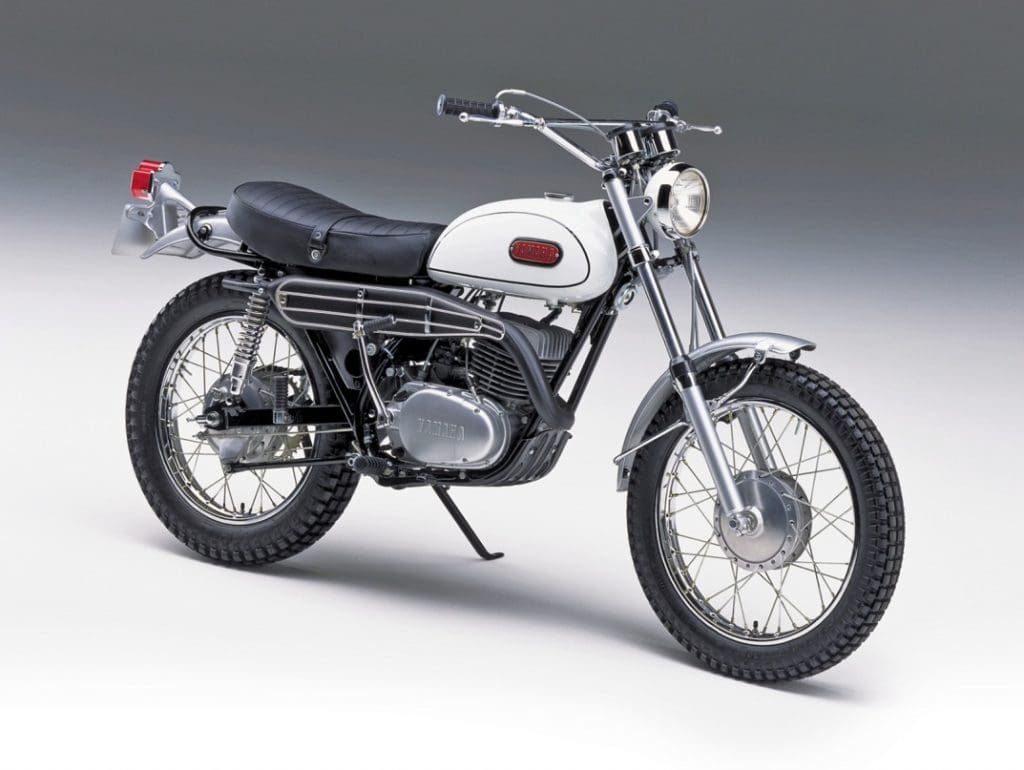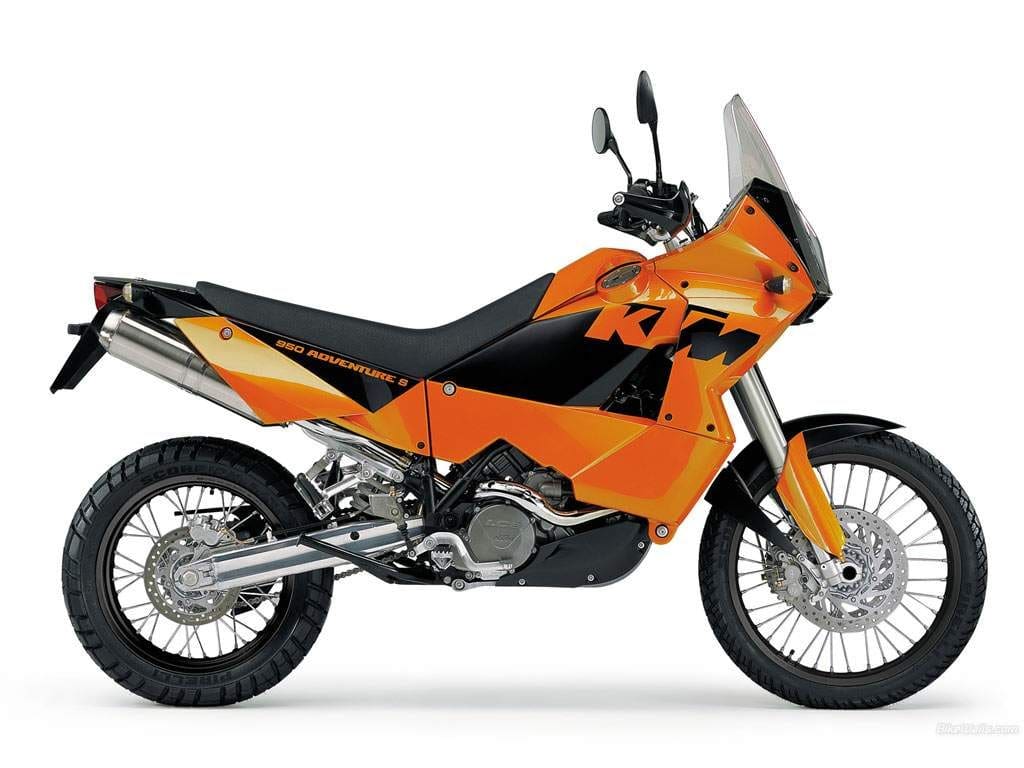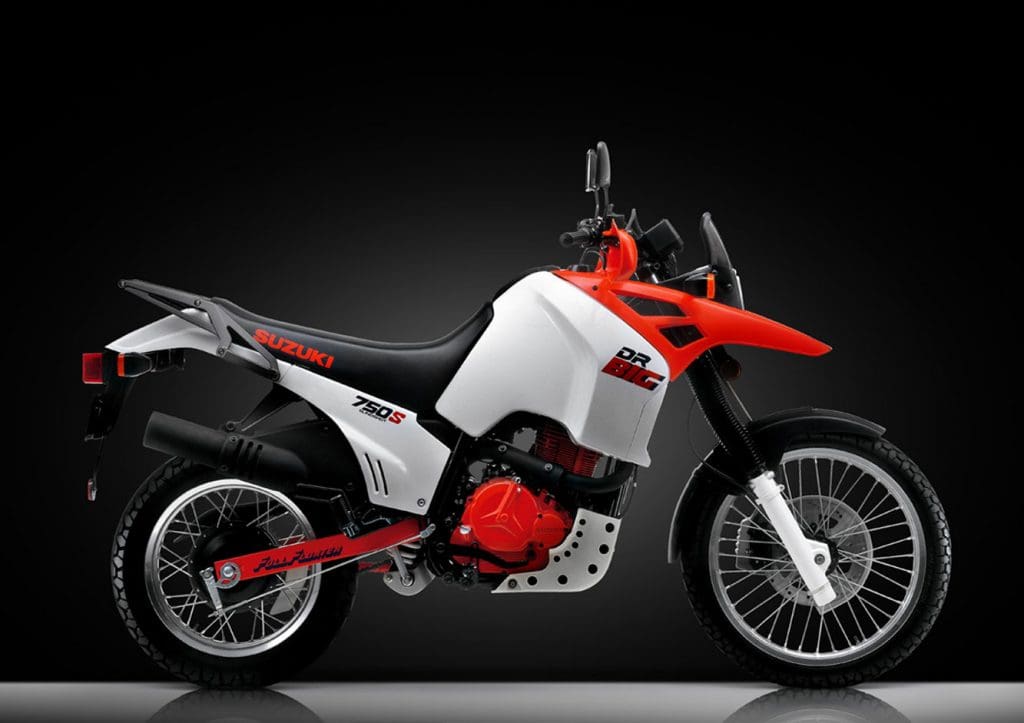Let’s not forget that motorcycles existed well before asphalt did, so the idea of a dual-purpose or adventure-style machine is as old as, well, motorcycling itself. But as time moved on so too developed specific needs and genres of riders and bikes alike. Here are four examples of two-wheeled machines that have shaped what we know today as big-bore adventure bikes.
1. Yamaha DT-1
British-built scrambler and trials models aside, Yamaha’s DT-1 is often credited as the first true competitive, but road-legal, off-road machine. It broke cover at the end of 1967 for a 1968 release and its narrow width, light weight and long-travel suspension made it a true race-on-Sundays roadbike and it immediately became a sales hit. Powered by a 246cc oil-injected two-stroke single-cylinder engine, it boasted 13kW (18hp) of power at 6000rpm and had a top speed of 100km/h.
Aimed squarely at the American market, the DT-1 answered many questions the motorcycle-mad Americans of the late 60s were asking and it wasn’t long before Yamaha was selling in excess of 50,000 of the things a year. To put that into perspective, Ducati sold 16,000 examples of its hugely popular Scrambler range in 2015 and it was a result that put it in the list of top 10 best-selling bikes of last year.

2. BMW R 80 G/S
Back before we referred to adventure bikes as even dual-purpose machines, BMW went and baffled many with the release of its R 80 G/S. It might be regarded today as one of the world’s most iconic and influential models, but its enormous weight and size juxtaposed to its off-road intentions left many experts and enthusiasts scratching their open-face helmet covered heads.
The year was 1980 and what initially seemed to be a bike with very limited appeal soon began to make a lot of sense to a lot of people. Helped by the fact that the R 80 GS, and later the R 100 GS, proved to be superb desert racers and doing extremely well in the popular Paris-Dakar events. It was the first in a long line of BMW-built bikes to bear the GS moniker and it was a genre critical to the German brand’s success. In fact, in 2014, the 500,000th Boxer-engined GS rolled off the production line in Berlin.

3. KTM 950 Adventure
The 2003 KTM 950 Adventure is significant for a couple of reasons. Firstly, it was KTM’s first-ever twin cylinder machine and secondly, because it lured would-be adventure riders away from the-then dominant BMW R 1200 GS. Lighter, more nimble and some would argue better looking than the boxer-engined German, the LC8-powered 950 paved the way to KTM’s current success in the highly competitive adventure segment.
While the firm released a bike called the 620 Adventure six years earlier in 1997, the tall single-cylinder bike was really little more than a dirtbike with lights. But the 950, as well as having the credentials to be a competitive contender in the likes of Dakar, the large-capacity V-twin was both a highly capable roadbike and a very handy off-roader. And now, 13 years later, on the eve of the launch of the very latest 1290 Adventure, the model is as true to its design brief as the 950 was then.

4. Suzuki DR750
Back in a time when bigger obviously meant better, Suzuki built the single-cylinder DR750. Earning the nickname DR Big because, well, it was, it was built as the Japanese firm’s Paris-Dakar desert racer. Released in 1988, it was the world’s largest single-cylinder engined production bike at the time (trumped two years later by its DR800 successor), it had a seat height of nearly 900mm, a dry weight of 180kg and a power capability of 39kW (52hp).
But the real reason Dr Big has made the list of pioneering adventure bikes is it is, from what we can tell, the earliest example of what pretty much defines the segment these days: that beaked front end.












